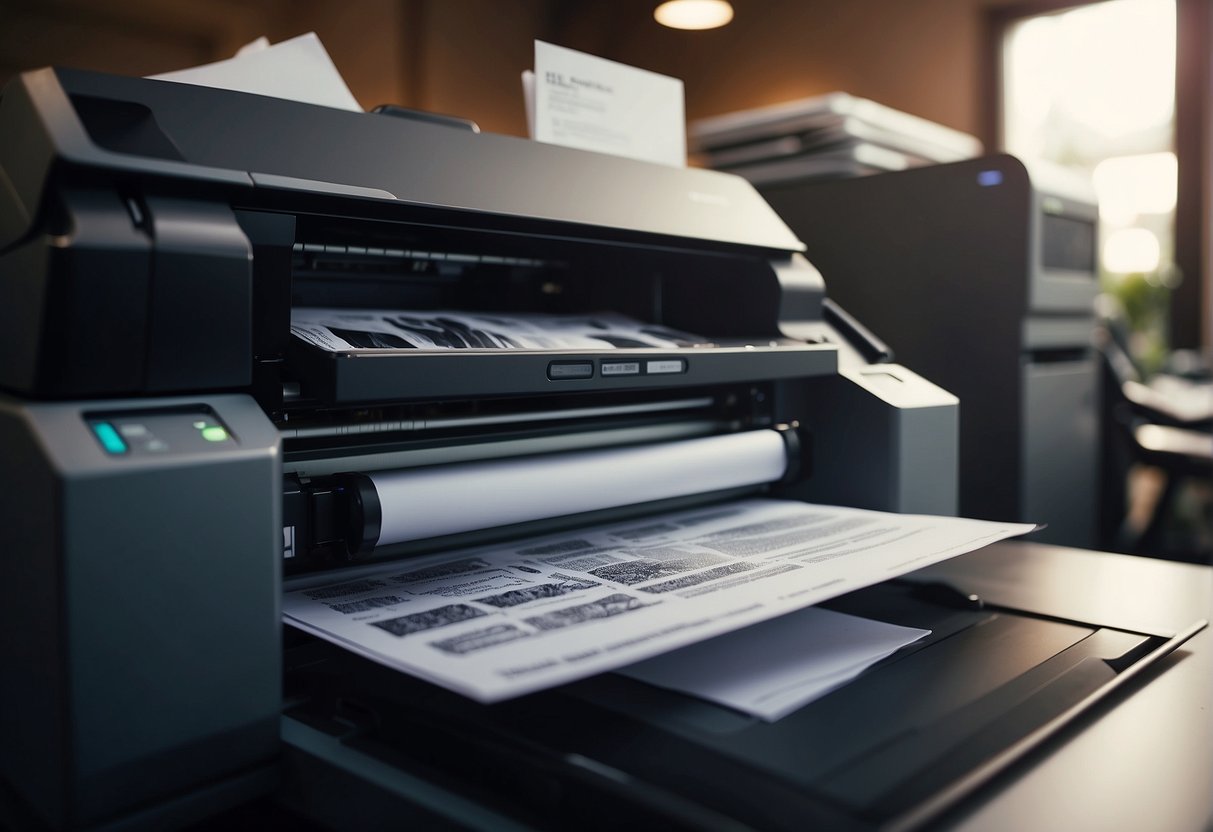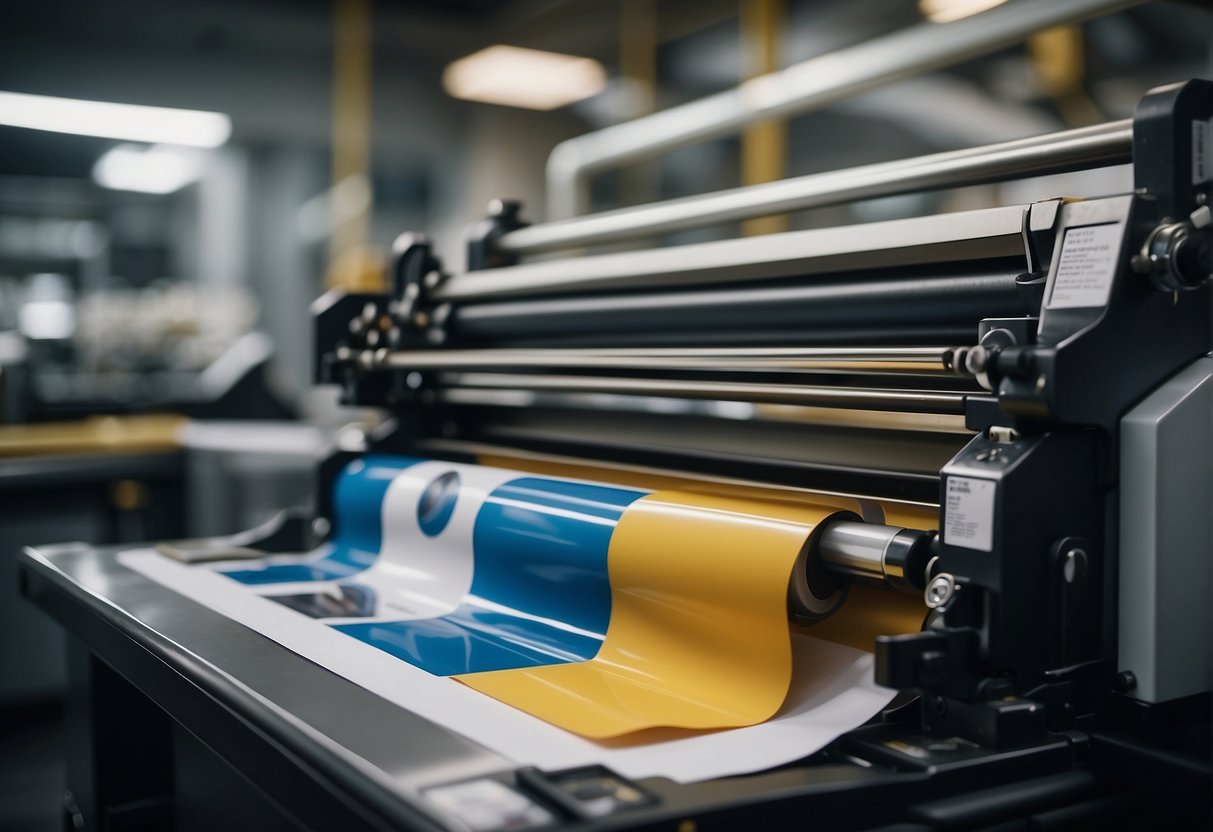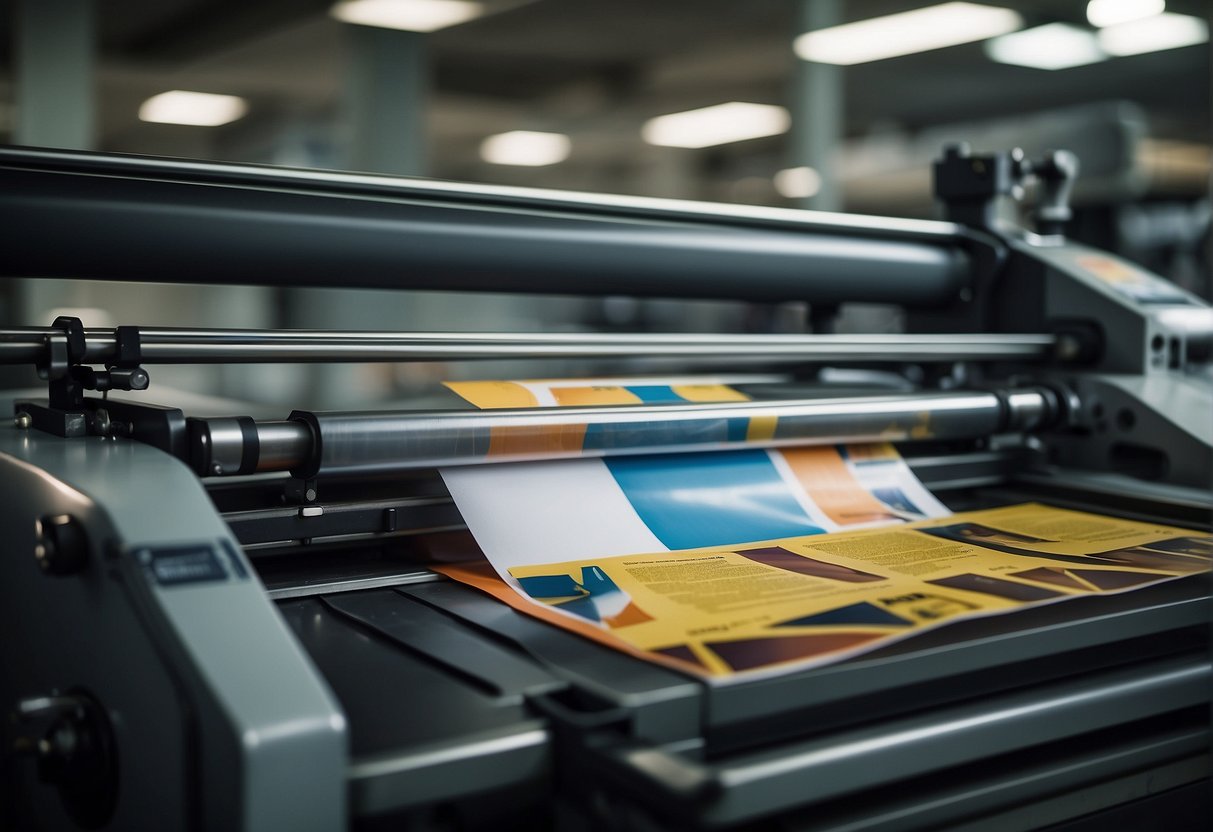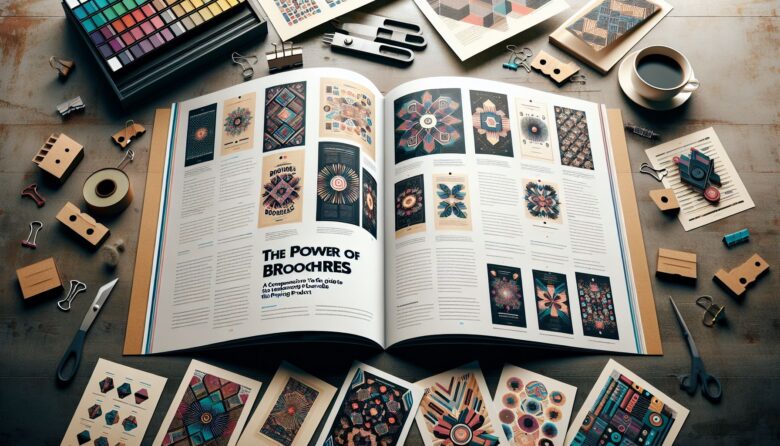Printing services are essential for businesses and individuals alike. From creating marketing materials to printing personal projects, printing services offer a variety of options to meet the needs of their customers. With advancements in technology, printing services have become more accessible and affordable than ever before.

Understanding printing services is important when deciding which service to use. Printing services can offer design and customization options to help create a unique and professional look for any project. Print products and materials vary depending on the service, but can include anything from business cards and flyers to banners and signs. Direct mail and distribution services are also available to help businesses reach their target audience.
Key Takeaways
- Printing services offer a variety of options to meet the needs of businesses and individuals.
- Understanding printing services can help customers choose the right service for their project.
- Print products and materials, design and customization, and direct mail and distribution are all services offered by printing companies.
Understanding Printing Services
Printing services are professional services that provide printing solutions to individuals and businesses. Printing is a process of reproducing text or images on paper or other materials. The printing process involves the use of printing machines, ink, and printing plates. There are various types of printing services available, and choosing the right service is crucial for achieving the desired results.
Types of Printing Services
There are different types of printing services available, and each is suitable for specific purposes. Some of the most common types of printing services are:
- Black-and-white printing: This type of printing is suitable for printing documents, reports, and other text-based materials. It is cost-effective and produces high-quality prints.
- Color printing: This type of printing is suitable for printing materials that require bright colors and detailed graphics. It is ideal for printing brochures, flyers, and other marketing materials.
- Online printing: Online printing services allow customers to upload their designs and have them printed and delivered to their doorstep. It is convenient, cost-effective, and ideal for small businesses and individuals.
Choosing the Right Service
Choosing the right printing service is essential for achieving the desired results. When choosing a printing service, it is important to consider the following factors:
- Professionalism: Choose a printing service that is professional, reliable, and has a good reputation.
- Printing process: Choose a printing service that uses the latest printing technology and techniques to produce high-quality prints.
- Brightest colors: If you require bright and vibrant colors, choose a printing service that uses high-quality ink and printing plates.
In conclusion, understanding printing services is crucial for achieving high-quality prints. There are different types of printing services available, and choosing the right service is essential for achieving the desired results. When choosing a printing service, it is important to consider factors such as professionalism, printing process, and quality of ink and printing plates.
Design and Customization
Printing services offer a range of design and customization options to help customers create unique and personalized products. This section explores the different design tools and services available.
Design Templates and Tools
Many printing services provide pre-made design templates that customers can use as a starting point for their own designs. These templates cover a wide range of products, including business cards, flyers, brochures, and more. They are an excellent option for customers who want to create professional-looking designs quickly and easily.
In addition to pre-made templates, many printing services also offer design tools that allow customers to create their own designs from scratch. These tools typically include a range of design elements, such as images, fonts, and colors, that customers can use to create their own unique designs.
Professional Design Services
For customers who want a more customized design, many printing services also offer professional design services. These services are typically provided by experienced designers who can work with customers to create custom designs that meet their specific needs.
Professional design services are an excellent option for customers who want a high-quality, unique design but don’t have the time or expertise to create one themselves. They can be particularly useful for businesses that want to create a consistent brand image across all of their marketing materials.
Overall, printing services offer a range of design and customization options to help customers create unique and personalized products. Whether customers want to use pre-made templates, design tools, or professional design services, there are plenty of options available to meet their needs.
Print Products and Materials

Printing services offer a wide range of products and materials to meet the needs of businesses and individuals. Whether you need business essentials, marketing and promotional materials, or specialty printing, there is a print product and material for you.
Business Essentials
Business cards, flyers, postcards, brochures, and booklets are some of the most commonly used print products for businesses. They are essential for networking, advertising, and informing customers about products and services. Printing services offer a variety of paper types, finishing options, and designs to make these products stand out and represent your brand effectively.
Marketing and Promotional Materials
Banners, signs, posters, and invitations are some of the most effective marketing and promotional materials available. They can be used to advertise events, promotions, and sales. Printing services offer a variety of sizes, materials, and finishing options to create eye-catching and memorable marketing materials.
Specialty Printing
Printing services also offer specialty printing for unique and personalized print products. Greeting cards, photo gifts, and other specialty items are perfect for personal use and gift-giving. These products can be customized with personal photos and designs to create a one-of-a-kind product.
Overall, printing services offer a wide range of print products and materials to meet the needs of businesses and individuals. With a variety of paper types, finishing options, and designs available, printing services can create high-quality and effective print products for any purpose.
Direct Mail and Distribution

Mailing Services
Printing services offer direct mail solutions for businesses looking to reach out to their target audience. Direct mail can be an effective way to promote a product or service, or to share important information with customers. Printing services can help design and print mailers, postcards, and newsletters, and can also handle the mailing process. They can help with addressing, sorting, and postage, making the process of direct mail easy and efficient.
Shipping and Handling
In addition to mailing services, printing services can also handle shipping and handling. This is particularly useful for businesses that need to send out products or promotional materials. Printing services can help with packing and shipping, and can also provide tracking information. They can work with shipping companies such as UPS Store to ensure that packages are delivered on time and in good condition.
Overall, printing services can provide businesses with a range of direct mail and distribution solutions. From designing and printing mailers to handling shipping and handling, printing services can help businesses reach out to their target audience with ease.
Support and Services for Businesses
Business Accounts and Offers
Printing Services offers a range of support and services for small businesses, including the option to create a business account. By creating an account, businesses can take advantage of exclusive deals and offers, as well as access to a dedicated account manager who can help with any printing needs.
Printing Services understands that every business is unique, which is why they offer tailored solutions to meet the specific needs of each business. Whether it’s printing marketing materials or creating custom signage, Printing Services has the expertise to get the job done right.
In-Store and Self-Service Options
Printing Services offers both in-store and self-service options for businesses. In-store services include printing, copying, and scanning, as well as professional design services. Businesses can also take advantage of same-day printing services, which can be a lifesaver when a last-minute deadline is looming.
Self-service options include access to a range of printing equipment, such as printers, copiers, and scanners, as well as the option to upload files online for printing. This can be a convenient option for businesses that need to print on the go, or for those who prefer to handle their own printing needs.
Printing Services is a trusted partner for businesses of all sizes, offering reliable and affordable printing solutions. With a range of support and services, businesses can focus on what they do best, while Printing Services takes care of the rest.
Frequently Asked Questions
How can I locate the nearest print shop?
To locate the nearest print shop, one can use search engines, such as Google Maps or Yelp, and search for “print shop” or “printing services.” Additionally, many print shops have websites that provide information on their locations, hours of operation, and services offered.
What options do I have for printing services online?
There are many options for printing services online, including popular websites such as VistaPrint, Shutterfly, and Snapfish. These websites offer a variety of printing services, including business cards, flyers, and photo prints. Some websites also offer design services to help customers create their own custom designs.
Are there any retail stores that offer in-store printing services?
Yes, many retail stores offer in-store printing services, including Staples, Office Depot, and FedEx Office. These stores offer a variety of printing services, including document printing, photo printing, and custom printing services.
Can I print documents directly from my mobile device?
Yes, many print shops and retail stores offer mobile printing services. Customers can download the store’s mobile app or use a third-party app to send their documents to the print shop or retail store for printing.
How do I print a document from my email?
To print a document from an email, customers can either forward the email to the print shop or retail store’s email address or download the attachment and bring it to the store on a flash drive or other storage device.
What are the capabilities and services offered by VistaPrint?
VistaPrint offers a wide range of printing services, including business cards, flyers, brochures, banners, and signs. They also offer design services to help customers create their own custom designs. Additionally, VistaPrint offers a variety of marketing services, including email marketing, social media marketing, and website design.
Sources:









